Premium Only Content
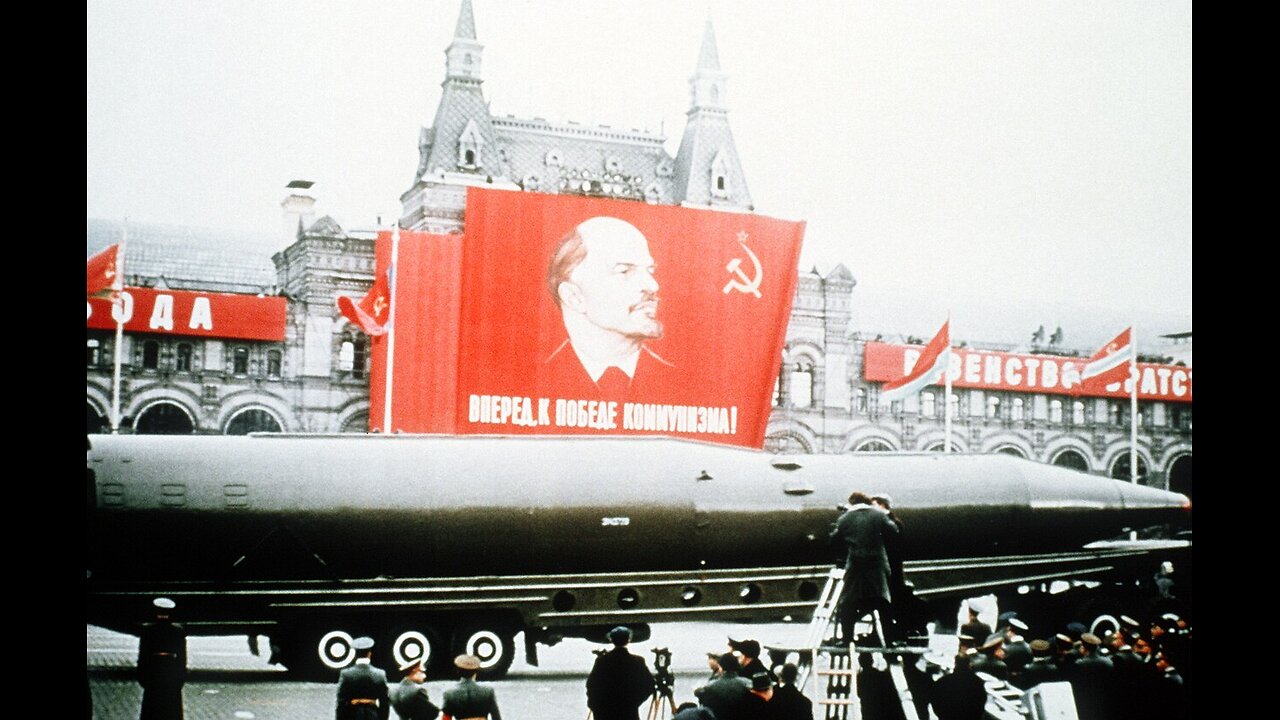
The Rise and Fall of the KGB in America (2009)
The United States Treasury Department was successfully penetrated by nearly a dozen Soviet agents or information sources, including Harold Glasser and his superior, Harry Dexter White, assistant secretary of the treasury and the second most influential official in the department.[1][2] In late May 1941, Vitali Pavlov, a 25-year-old NKVD officer, approached White and attempted to secure his assistance to influence U.S. policy towards Japan. Pavlov's memoirs, after decades of being in the KGB, alleged that White agreed to assist Soviet intelligence in any way he could. Whittaker Chambers states White's principal function was aiding the infiltration and placement of Soviet operatives within the government, and protecting sources.[33] When security concerns arose around Nathan Gregory Silvermaster, White protected him in his sensitive position at the Board of Economic Warfare. White likewise was a purveyor of information and resources to assist Soviet aims, and agreed to press for the release of German occupation currency plates to the Soviet Union. The Soviets later used the plates to print unrestricted sums of money to exchange for U.S. and Allied hard goods.[34]
In August 1945, Elizabeth Bentley, fearful of assassination by the Soviet MGB, turned herself in to the government. She implicated many agents and sources in the Golos and Silvermaster spy networks, and was the first to accuse Harry Dexter White of acting on behalf of Soviet interests in releasing occupation plates to Moscow, later confirmed by Soviet archives and former KGB officers.[13][34] U.S. counterintelligence archives in the Venona project contain "damning evidence" against White—showing evidence for his inappropriate contacts with Soviet agents.[35]
In a twist of history, Harry Dexter White would participate in the Bretton Woods Conference, which created the American-led, post-war financial and economic order.[36] Although White was sympathetic to the Soviet Union, he was still capitalist in his economic thinking, and there was only so much he could do to benefit the Soviet Union at a conference for liberal internationalism, an idea the Soviets opposed.[35] Ultimately, the main result was that President Truman would nominate a European to Managing Director of the IMF instead of Harry Dexter White.[36] Dr. James C. Van Hook, joint historian of the Department of State and the Central Intelligence Agency., says "It is difficult to understand how White's detractors could characterize Bretton Woods, a fundamental institution of liberal capitalism, as inherently pro-Soviet."[35][33]
Aftermath
President Harry S. Truman's Executive Order 9835 of 22 March 1947 tightened protections against subversive infiltration of the US Government, defining disloyalty as membership on a list of subversive organizations maintained by the Attorney General. Truman, however, was opposed to the McCarran Internal Security Act of 1950, calling it a "Mockery of the Bill of Rights" and a "long step towards totalitarianism".[37]
Cold War espionage
See also: Cold War espionage
[icon]
This section needs expansion. You can help by adding to it. (April 2021)
Replica of The Thing, which contained a Soviet bugging device, on display at the NSA's National Cryptologic Museum
Soviet espionage operations continued during the Cold War. The Venona project, declassified in 1995 by the Moynihan Commission, contained extensive evidence of the activities of Soviet spy networks in America.[38]
On August 4, 1945, several weeks before the end of World War II, a delegation from the Young Pioneer Organization of the Soviet Union presented a bugged carving to Ambassador Harriman, later known as The Thing, as a "gesture of friendship" to the Soviet Union's war ally. The device, embedded in a carved wooden plaque of the Great Seal of the United States, was used by the Soviet government to spy on the United States. It hung in the ambassador's Moscow residential study for seven years, until it was exposed in 1952 during the tenure of Ambassador George F. Kennan.[39]
The Mitrokhin Archive showed that the Soviets did not just perform espionage in terms of gathering intelligence, but also used its intelligence agencies for "active measures" a form of political warfare involving forgeries and disinformation.[40]
Communist Party USA
During the Second World War, the Communist Party USA was a center of Soviet espionage in the United States. After the war, this continued. Espionage historian John Earl Haynes states that the CPUSA was essentially a Soviet "fifth column", though "dried up as a base for Soviet espionage once the administration got serious about internal security".[41]
The Communist Party USA received a substantial subsidy from the USSR from 1959 until 1989. Because the CPUSA consistently maintained a pro-Moscow line, many members left over time dissatisfied with events of Soviet repression, such as in Hungary in 1956 and in Czechoslovakia in 1968. The Soviet funding ended in 1989 when Gus Hall condemned the initiatives taken by Mikhail Gorbachev.[42]
In 1952, Jack and Morris Childs—both American-born ex-Soviet spies—became FBI double agents, and informed on the CPUSA for the rest of the Cold War, monitoring the Soviet funding and communications with Moscow.[43][44]
Spy motivations and Soviet recruitment techniques
According to longtime CIA officer Frederick Wettering, many turncoats to the Soviets were not ideologically communist, such as Aldrich Ames and John Walker who "did it strictly for the money." Wettering summarized the motivations as "MIRE -- money, ideology, revenge and ego."[45]
According to Russian investigative writer, Andrei Soldatov:[46]
In Soviet times, intelligence and counterintelligence branches of the KGB were closely interconnected. In addition to its espionage abroad, the KGB was always busy collecting “intelligence from the territory,” a euphemism for recruiting foreign nationals in the Soviet Union, with an eye to subsequently running them as agents in their home countries. Regional departments of the KGB were tasked with recruiting foreigners traveling throughout the country.
Former KGB defector Jack Barsky stated, "Many a right-wing radical had unknowingly given information to the Soviets (under a 'false flag'), thinking they were working with a Western ally, such as Israel, when in fact their contact was a KGB operative."[47]
Cambridge Five
Notable cases of Cold War Soviet espionage included Kim Philby, a Soviet double agent and British intelligence liaison to American intelligence, who was revealed to be a member of the "Cambridge Five" spy ring in 1963.[38] The other four members of the "Cambridge Five" spy ring included Donald Maclean, Guy Burgess, Anthony Blunt, and John Cairncross, although Michael Straight was also involved with the Soviet spy ring and there were possibly other alleged members.[48] The Cambridge Spy Ring focused on serving the Soviet Union in the Cold War by infiltrating British intelligence and providing secret information to the Soviet top leaders, and causing mistrust in British intelligence in the United States.[48]
Kim Philby, along with Bill Weisband, would end up betraying the existence of the Venona project to the Soviets, between 1945 and 1948.[38][49]
Active measures
Active measures (Russian: активные мероприятия, romanized: aktivnye meropriyatiya) are a form of political warfare that was conducted by the Soviet Union. These ranged from simple propaganda and forgery of documents, to assassination, terrorist acts and planned sabotage operations.[4] In the US the KGB's main active measures were disinformation and the spread of conspiracy theories.[40][4]
Retired KGB Major General Oleg Kalugin, former Head of Foreign Counter Intelligence for the KGB (1973–1979), described active measures as "the heart and soul of Soviet intelligence":[5]
"Not intelligence collection, but subversion: active measures to weaken the West, to drive wedges in the Western community alliances of all sorts, particularly NATO, to sow discord among allies, to weaken the United States in the eyes of the people of Europe, Asia, Africa, Latin America, and thus to prepare ground in case the war really occurs. To make America more vulnerable to the anger and distrust of other peoples."[50]
The doctrine of active measures was taught in the Andropov Institute of the KGB situated at Foreign Intelligence Service (SVR) headquarters in Yasenevo District of Moscow. The head of the "active measures department" was Yuri Modin, former controller of the Cambridge Five spy ring.[51][40]
One example of active measures by the KGB was Operation "Denver" (also nicknamed Operation INFEKTION), a propaganda campaign which fabricated and spread the idea HIV/AIDS was invented by the US as a biological weapon from Fort Detrick, Maryland.[40][52] As part of the disinformation campaign the KGB, through affiliated Soviet press and Soviet bloc intelligence agencies, disseminated publications that claimed to be independent investigative work, such as the "Segal report" by Jakob Segal.[5][52] Part of the goal was to shift attention away from the Soviets' own biological weapons program. In 1992, SVR head Yevgeny Primakov admitted that the KGB had instigated and perpetuated the myth of a manmade AIDS.[5] The conspiracy theories fed into AIDS denialism and may have led to preventable deaths across the United States, and South Africa.[5][52] According to the U.S. State Department, the Soviet Union used the campaign to undermine the United States' credibility, foster anti-Americanism, isolate America abroad, and create tensions between host countries and the U.S. over the presence of American military bases.[53] A cycle of misinformation and disinformation revolved between Kremlin-based and U.S.-based conspiracy theorists (such as Lyndon LaRouche).[54]
A series of Soviet active measures focused on exacerbating racial divisions in the United States. According to intelligence historian Christopher Andrew, "Martin Luther King was probably the only prominent American to be the target of active measures by both the FBI and the KGB." The FBI surveilled King and also tried to publicize adultery accusations against him, while posing as a former supporter. Meanwhile, the KGB tried but failed to influence MLK, Jr. through the CPUSA. Finding King not radical enough, the KGB sought to discredit him by portraying him as a supposed "Uncle Tom". After King's assassination, the KGB spread conspiracy theories about the government being involved in his murder.[55][56] Following this, Yuri Andropov approved the forgery of anti-black pamphlets claiming to be from the Jewish Defense League. A more extensive sabotage plot was planned as "Operation PANDORA" but never implemented.[55] The KGB later penned racist letters to appear as a Ku Klux Klan campaign against Olympic athletes from African and Asian countries to scare them from participating, ahead of the Soviets' 1984 Summer Olympics boycott.[55][56]
According to Yuri Bezmenov, a defector from the Soviet KGB, psychological warfare activities accounted for 85% of all KGB efforts (the other 15% being direct espionage and intelligence gathering). Bezmenov put the process into the four stages "destabilize, demoralize, crisis, normalization" where an enemy country would be undermined over several decades, and pointed out that once the Soviet Union took control of a country, such as Czechoslovakia, they disposed of actual revolution and radicalism.[57]
Spy ring discoveries
Major spy discoveries occurred in the 1980s despite the looming end of the Cold War. The press dubbed 1985 the "Year of the Spy" due to the discovery of multiple spies and spy rings,[58] many of them passing information to the Soviet Union, such as John Anthony Walker and Ronald Pelton.[58][59] The New York Times reported in 1987 that the Walker spy ring was "described as the most damaging Soviet spy ring in history."[60] During his time as a Soviet spy (1967-1985), Walker stole and sold codes that assisted the Soviets in deciphering encrypted Navy messages, which allowed them to monitor American naval assets. The Walker spy ring also compromised information about weapons, sensor data, and related naval tactics.[61] Other 1980s spies included Aldrich Ames, a KGB mole. Investigation of Ames' activities led to the 1995 CIA disinformation controversy revealing that false reports were fed to the United States through Soviet double agents.[59][62]
See also
American espionage in the Soviet Union and Russian Federation
Amerasia
Bella Dodd
Chinese espionage in the United States
David Karr
Farewell Dossier
George Trofimoff
Gouzenko Affair
Hollow Nickel Case
Lev Vasilevsky
List of Americans in the Venona papers
List of Eastern Bloc agents in the United States
Nuclear espionage
Russian espionage in the United States
Russian interference in the 2016 United States elections
Russian involvement in regime change
Russian Soviet Government Bureau
The Americans (2013 TV series)
The Thing (listening device)
References
Haynes, John Earl, and Klehr, Harvey, Venona: Decoding Soviet Espionage in America, Yale University Press (2000) ISBN 0-300-08462-5
Weinstein, Allen; Vassiliev, Alexander (1999). The Haunted Wood: Soviet Espionage in America: The Stalin Era. New York: Random House. ISBN 9780679457244.
Retrieved Papers Shed Light On Communist Activities In U.S., Associated Press, January 31, 2001
Abrams, Steve (2016). "Beyond Propaganda: Soviet Active Measures in Putin's Russia". Connections. 15 (1): 5–31. doi:10.11610/Connections.15.1.01. ISSN 1812-1098. JSTOR 26326426.
"Russian fake news is not new: Soviet Aids propaganda cost countless lives". the Guardian. 2017-06-14. Retrieved 2021-04-15.
https://www.afio.com/publications/WHEELER%20Douglas%20Intelligence%20Between%20the%20War%201919%201939%20from%20AFIO%20INTEL_SPRGSUM2013_Vol20_No1_FINAL.pdf [bare URL PDF]
"Red Spies In America: Stolen Secrets And The Dawn Of The Cold War | Wilson Center". www.wilsoncenter.org. Retrieved 2021-09-17.
"Venona: Soviet Espionage and the American Response, 1939-1957". cia.gov. 2006-11-01. Archived from the original on 2006-11-01. Retrieved 2021-09-17.
"Rich and red: The USSR's prize assets | Harvey Klehr". The Critic Magazine. 2020-09-19. Retrieved 2022-01-30.
"THE RIDDLE OF ARMAND HAMMER". The New York Times. 1981-11-29. ISSN 0362-4331. Retrieved 2022-01-30.
"ARMAND HAMMER: TINKER, TRAITOR, SATYR, SPY A SCATHING NEW BIOGRAPHY PAINTS THE GLOBETROTTING FOUNDER OF OCCIDENTAL PETROLEUM AS A BLATANT OPPORTUNIST, A WOMANIZER--AND PERHAPS EVEN A SOVIET SPY. - November 11, 1996". money.cnn.com. Retrieved 2022-01-30.
Andrew, Christopher M. (2000). The Sword and the Shield : the Mitrokhin Archive and the Secret History of the KGB. Vasili Mitrokhin. New York: Basic Books. ISBN 978-0-465-01003-5. OCLC 727648881.
Sudoplatov, Pavel Anatoli, Schecter, Jerrold L., and Schecter, Leona P., Special Tasks: The Memoirs of an Unwanted Witness — A Soviet Spymaster, Little Brown, Boston (1994)
Christopher Andrew and Vasili Mitrokhin, The Mitrokhin Archive: The KGB in Europe and the West, Gardners Books (2000), ISBN 0-14-028487-7
Alexander Vassiliev’s Notes on Anatoly Gorsky’s December 1948 Memo on Compromised American Sources and Networks Archived 2009-02-25 at the Wayback Machine; John Earl Haynes, "KGB officer Gaik Badelovich Ovakimian worked as a Soviet spy in the United States from 1933 until 1941 when he was arrested and deported. He was identified in the Venona cables under the cover name Gennady. Elizabeth Bentley reported that Golos identified Ovakimian as his chief contact with the KGB until the arrest."
VENONA documents NY-MOSCOW, Nos. 1221, 1457, and 1512 (1944)
Chambers, Whittaker (1952). Witness. Random House. pp. 498. ISBN 0-89526-571-0.
Suvorov, Viktor, Icebreaker, London: Hamish Hamilton Ltd. (1990), ISBN 0-241-12622-3
Tanenhaus, Sam (1998). Whittaker Chambers: a biography. New York: Random House. ISBN 0-375-75145-9.
Retrieved Papers Shed Light On Communist Activities In U.S., Associated Press, January 31, 2001
Mexican, Tom Sharpe The New (24 January 2011). "Book links Trotsky assassin to Plaza pharmacy, now Haagen-Dazs shop". Santa Fe New Mexican. Retrieved 2021-07-10.
Farwell, Matt (2019-08-15). "Jeffrey Epstein Chose New Mexico for a Reason". The New Republic. ISSN 0028-6583. Retrieved 2021-07-10.
Cooperation, Time, August 19, 1957
"Club Life". The New Yorker. 1957-10-12. Retrieved 2021-09-17.
Roberts, Sam, 1947- (2001). The brother : the untold story of atomic spy David Greenglass and how he sent his sister, Ethel Rosenberg, to the electric chair (1st ed.). New York: Random House. ISBN 0-375-50013-8. OCLC 45639061.
Feklisov, Aleksandr, and Kostin, Sergei, The Man Behind the Rosenbergs, Enigma Books (2001)
Sudoplatov 1994, p. 217.
Sudoplatov 1994.
"Pavel A. Sudoplatov". Atomic Heritage Foundation. Retrieved 2021-09-17.
Moynihan, Daniel Patrick (1998). Secrecy: The American Experience. Yale University Press. p. 15. ISBN 978-0-300-08079-7.
"Christopher Andrew on the lost history of global intelligence". The MacMillan Center. 2018-11-13. Retrieved 2021-07-07.
"Harry Gold". Atomic Heritage Foundation. Retrieved 2021-07-10.
Ferran, Lee (6 December 2018). "Why a Top U.S. Official Was Accused of Being a Soviet Spy After Pearl Harbor". HISTORY. Retrieved 2021-07-10.
Schecter, Jerrold and Leona, Sacred Secrets: How Soviet Intelligence Operations Changed American History, Potomac Books (2002)
"Treasonable Doubt: The Harry Dexter White Spy Case - CIA". www.cia.gov. Retrieved 2021-07-10.
Rao, Ashok (2014-08-24). "This Soviet spy created the US-led global economy". Vox. Retrieved 2021-07-10.
Spartacus. "Internal Security Act". schoolnet.co.uk. Retrieved 2011-04-11.
Moynihan, Daniel Patrick (1998). Secrecy: The American Experience. Yale University Press. pp. 15-16. ISBN 978-0-300-08079-7.
George F. Kennan, Memoirs, 1950–1963, Volume II (Little, Brown & Co., 1972), pp. 155, 156
Walton, Calder (2016-12-23). ""Active measures": a history of Russian interference in US elections". Prospect Magazine. Retrieved 2021-04-05.
Haynes, John Earl (February 2000). "Exchange with Arthur Herman and Venona book talk". JohnEarlHaynes.org. Retrieved 2021-11-09.
"The curious survival of the US Communist Party". BBC News. 2014-04-30. Retrieved 2021-05-26.
Klehr, Harvey (2017-07-03). "Opinion | American Reds, Soviet Stooges". The New York Times. ISSN 0362-4331. Retrieved 2021-11-10.
Babcock, Charles R. (1981-09-17). "Soviet Secrets Fed to FBI for More Than 25 Years". The Washington Post. ISSN 0190-8286. Retrieved 2021-11-10.
"U.S. Spy History Is Older Than the Nation Itself". ABC News. Retrieved 2021-11-07.
Soldatov, Andrei (2021-08-29). "Inside Vladimir Putin's Shadowy Army of Global Spies". The Daily Beast. Retrieved 2021-11-07.
Barsky, Jack (2017). Deep undercover : my secret life and tangled allegiances as a KGB spy in America. Carol Stream, IL. ISBN 978-1-4964-1686-5. OCLC 979545331.
Lehmann-Haupt, Christopher (2004-01-05). "Michael Straight, Who Wrote of Connection to Spy Ring, Is Dead at 87". The New York Times. ISSN 0362-4331. Retrieved 2021-06-12.
West, Nigel (2002-03-01). "'Venona': the British dimension". Intelligence and National Security. 17 (1): 117–134. doi:10.1080/02684520412331306440. ISSN 0268-4527. S2CID 145696471.
Interview of Oleg Kalugin on CNN Archived June 27, 2007, at the Wayback Machine
Mitrokhin, Vasili; Andrew, Christopher (2000). The Mitrokhin Archive: The KGB in Europe and the West. Penguin. ISBN 0-14-028487-7. (en.wikipedia) (google books)
"Lessons From Operation "Denver," the KGB's Massive AIDS Disinformation Campaign". The MIT Press Reader. 2020-05-26. Retrieved 2021-04-15.
Soviet Influence Activities: A Report on Active Measures and Propaganda, 1986-87 (PDF) (Report). U.S. Department of State. August 1987.
Selvage, Douglas (2019-10-01). "Operation "Denver": The East German Ministry of State Security and the KGB's AIDS Disinformation Campaign, 1985–1986 (Part 1)". Journal of Cold War Studies. 21 (4): 71–123. doi:10.1162/jcws_a_00907. ISSN 1520-3972.
Andrew, Christopher (2001). The Sword and the Shield: The Mitrokhin Archive and the Secret History of the KGB. Basic Books. ISBN 0-465-00312-5.
"Russians Targeted U.S. Racial Divisions Long Before 2016 And Black Lives Matter". NPR.org. Retrieved 2021-07-10.
Bezmenov, Yuri (1983). Psychological Warfare Subversion & Control of Western Society. Los Angeles. Archived from the original on 2021-12-13. Retrieved 2020-07-08 – via YouTube.
"Year of the Spy (1985)". Federal Bureau of Investigation. Retrieved 2021-05-26.
"Recent U.S. Spy Cases | CNN". CNN. Archived from the original on December 10, 2008. Retrieved February 25, 2017. "1985 -- Walker family"
Shenon, Philip (January 4, 1987). "In short: nonfiction". The New York Times. Retrieved November 16, 2007.
Mears, Bill; Berlinger, Joshua (2014-08-29). "Convicted Cold War spy John Walker dies in federal prison". CNN. Retrieved 2021-05-26.
"CIA Heavily Infiltrated in Russia, Report Finds : Espionage: Operations in '80s severely compromised, Ames study shows. Senior officials were often kept in dark". Los Angeles Times. 1995-10-31. Retrieved 2021-05-26.
Further reading
Sudoplatov, Pavel (1 April 1994). Special Tasks. Little, Brown and Company. ISBN 978-0316773522.
Chambers, Whittaker (1952). Witness. Random House. ISBN 0-89526-571-0.
John Earl Haynes, Harvey Klehr, and Alexander Vassiliev, Spies: The Rise and Fall of the KGB in America (New Haven: Yale University Press, 2009)
John Earl Haynes and Harvey Klehr, Venona: Decoding Soviet Espionage in America, Yale University Press
Allen Weinstein and Alexander Vassiliev, The Haunted Wood: Soviet Espionage in America--the Stalin Era (New York: Random House, 1999)
External links
Soviet Technospies from the Dean Peter Krogh Foreign Affairs Digital Archives
For new evidence on Soviet espionage in the United States, see former KGB officer Alexander Vassiliev's Notebooks From the Cold War International History Project (CWIHP)
V.I. Lenin, Terms of Admission into Communist International, (July 1920) First published 1921, The Second Congress of the Communist International, Verbatum Report, Communist International, Petrograd
Office of the National Counterintelligence Executive. CI Reader: American Revolution into the New MillenniumA Counterintelligence Reader Volume 3, Chapter 1: Cold War Counterintelligence. PDF file. office of the Director of Central Intelligence. Retrieved June 21, 2005.
Proyect, Louis. Harvey Klehr's "The Secret World of American Communism". Published online May 25, 2002. Retrieved June 21, 2005.
Robert Louis Benson and Michael Warner, eds., Venona: Soviet Espionage and the American Response, 1939-1957, (Washington, D.C.: National Security Agency, Central Intelligence Agency, 1996)*Vassiliev, Alexander (2003), Alexander Vassiliev's Notes on Anatoly Gorsky's December 1948 Memo on Compromised American Sources and Networks, retrieved 2012-04-21
The Hanford Site, Historic docs, Section 8 - Site Security
Discouraged, Disillusioned and Duped, Eyewitness account of the era
Razvedka, Intelligence Information and the Process of Decision Making: Turning Points of the Early Period of the Cold War (1944–1953) Archived March 20, 2006, at the Wayback Machine (In Russian).
Interview with Ralph De Toladano
History of Russian foreign intelligence in North America (Russian) Archived 2007-07-10 at the Wayback Machine, Official site of Foreign Intelligence Service (Russia)
Film: The KGB Connections: An Investigation Into Soviet Operations in North America, 1982, Public domain: Video on YouTube.
Whittaker Chambers | Witness in the Alger Hiss Case, Anti-Communist, ex-Communist, Spy, Editor, Journalist, Intellectual, Writer, Translator, Poet
Murphy, William T. (2021-01-02). "First Decade of Soviet Espionage in America: 1924 to 1933". International Journal of Intelligence and CounterIntelligence. 34 (1): 45–69. doi:10.1080/08850607.2020.1781442. S2CID 225440603.
vte
Soviet and Russian spies
In the US
1940s and before
John Abt Joel Barr Elizabeth Bentley Earl Browder Boris Bukov Whittaker Chambers Lona Cohen Morris Cohen Judith Coplon Noel Field Klaus Fuchs Harold Glasser Harry Gold David Greenglass Theodore Hall John Herrmann Donald Hiss George Koval William Malisoff Hede Massing Boris Morros Isaiah Oggins William Perl Victor Perlo J. Peters William Ward Pigman Lee Pressman Vincent Reno Julius and Ethel Rosenberg Alfred Sarant Saville Sax Morton Sobell Alexander Ulanovsky Nadezhda Ulanovskaya Julian Wadleigh Harold Ware Bill Weisband Nathaniel Weyl Harry Dexter White Maria Wicher Nathan Witt Flora Wovschin Anatoli Yatskov
Cold War
Rudolf Abel Aldrich Ames David Sheldon Boone Christopher John Boyce Thomas Patrick Cavanaugh Jack Dunlap James Hall III Robert Hanssen Reino Häyhänen Edward Lee Howard Robert Lee Johnson Karl Koecher Andrew Daulton Lee Robert Lipka Clayton J. Lonetree Richard Miller Ronald Pelton Earl Edwin Pitts Jack Soble Myra Soble Robert Soblen Oscar Seborer Robert Thompson George Trofimoff John Anthony Walker Jerry Whitworth
Post-Soviet
Evgeny Buryakov Anna Chapman Peter Debbins Robert Hanssen Harold James Nicholson Illegals Program
In the UK
Cambridge Five
Anthony Blunt Guy Burgess John Cairncross Donald Maclean Kim Philby
Portland spy ring
Lona Cohen Morris Cohen Ethel Gee Harry Houghton Konon Molody
Michael Bettaney George Blake David Crook Litzi Friedmann Klaus Fuchs Percy Glading Melita Norwood Alan Nunn May John Peet Geoffrey Prime Goronwy Rees Michael John Smith Dave Springhall John Alexander Symonds Edith Tudor-Hart John Vassall Arthur Wynn
In Canada
Sam Carr Jeffrey Delisle Igor Gouzenko Elena Miller Gerda Munsinger Stephen Joseph Ratkai Fred Rose
In Japan
Hirohide Ishida Yotoku Miyagi Sanzō Nosaka Hotsumi Ozaki Ryūzō Sejima
Elsewhere /
in combination
Alexander Gregory Barmine Stig Bergling Dieter Gerhardt Walter Krivitsky Kerttu Nuorteva Vladimir Mikhaylovich Petrov Fyodor Raskolnikov Alfred Redl Ignace Reiss Vitaly Shlykov Herman Simm Siddiq Ghouse Richard Sorge Arne Treholt Stig Wennerström
vte
Cold War
United States Soviet Union NATO Warsaw Pact ANZUS METO SEATO NEATO Rio Pact Non-Aligned Movement
1940s
Morgenthau Plan Hukbalahap Rebellion Jamaican political conflict Dekemvriana Guerrilla war in the Baltic states
Operation Priboi Operation Jungle Occupation of the Baltic states Cursed soldiers Operation Unthinkable Gouzenko Affair Division of Korea Indonesian National Revolution Operation Masterdom Operation Beleaguer Operation Blacklist Forty Iran crisis of 1946 Greek Civil War Baruch Plan Corfu Channel incident Turkish straits crisis Restatement of Policy on Germany First Indochina War 1947 Polish parliamentary election Truman Doctrine Asian Relations Conference May 1947 crises Partition of India Indo-Pakistani War of 1947–1948 1947–1949 Palestine war
1947–1948 civil war in Mandatory Palestine 1948 Arab–Israeli War 1948 Palestinian expulsion and flight Marshall Plan Comecon 1948 Czechoslovak coup d'état Incapacitation of the Allied Control Council Al-Wathbah uprising Tito–Stalin split Berlin Blockade Annexation of Hyderabad Madiun Affair Western betrayal Iron Curtain Eastern Bloc Western Bloc Chinese Civil War
Chinese Communist Revolution Malayan Emergency March 1949 Syrian coup d'état Operation Valuable
1950s
Bamboo Curtain McCarthyism Korean War Arab Cold War (1952–1979) 1952 Egyptian revolution Iraqi Intifada (1952) Mau Mau rebellion East German uprising of 1953 1953 Iranian coup d'état Pact of Madrid Bricker Amendment 1954 Syrian coup d'état Petrov Affair Domino theory 1954 Geneva Conference 1954 Guatemalan coup d'état Capture of the Tuapse First Taiwan Strait Crisis Jebel Akhdar War Algerian War Kashmir Princess Bandung Conference Geneva Summit (1955) Vietnam War Cyprus Emergency "On the Cult of Personality and Its Consequences" 1956 Poznań protests Hungarian Revolution of 1956 Polish October Suez Crisis "We will bury you" Operation Gladio Syrian Crisis of 1957 Sputnik crisis Ifni War Iraqi 14 July Revolution 1958 Lebanon crisis Second Taiwan Strait Crisis 1959 Mosul uprising 1959 Tibetan uprising Laotian Civil War Kitchen Debate Cuban Revolution
Consolidation of the Cuban Revolution Sino-Soviet split
1960s
Congo Crisis Simba rebellion 1960 U-2 incident Bay of Pigs Invasion 1960 Turkish coup d'état Albanian–Soviet split
Expulsion of Soviets from Albania Iraqi–Kurdish conflict
First Iraqi–Kurdish War Berlin Crisis of 1961 Berlin Wall Annexation of Goa Papua conflict Indonesia–Malaysia confrontation Sand War Portuguese Colonial War
Angolan War of Independence Guinea-Bissau War of Independence Mozambican War of Independence Cuban Missile Crisis El Porteñazo Sino-Indian War Communist insurgency in Sarawak Ramadan Revolution Eritrean War of Independence North Yemen civil war 1963 Syrian coup d'état Assassination of John F. Kennedy Aden Emergency Cyprus crisis of 1963–1964 Shifta War Mexican Dirty War
Tlatelolco massacre Guatemalan Civil War Colombian conflict 1964 Brazilian coup d'état Dominican Civil War Rhodesian Bush War Indonesian mass killings of 1965–1966 Transition to the New Order (Indonesia) ASEAN Declaration 1966 Syrian coup d'état Cultural Revolution Argentine Revolution South African Border War Korean DMZ Conflict 12-3 incident Greek junta 1967 Hong Kong riots Years of Lead (Italy) Six-Day War War of Attrition Dhofar War Al-Wadiah War Nigerian Civil War Protests of 1968
May 68 Prague Spring USS Pueblo incident 1968 Polish political crisis Communist insurgency in Malaysia Warsaw Pact invasion of Czechoslovakia 17 July Revolution 1968 Peruvian coup d'état
Revolutionary Government 1969 Sudanese coup d'état 1969 Libyan revolution Goulash Communism Sino-Soviet border conflict New People's Army rebellion
1970s
Détente Nuclear Non-Proliferation Treaty Black September Alcora Exercise Corrective Movement (Syria) Western Sahara conflict Cambodian Civil War Communist insurgency in Thailand 1970 Polish protests Koza riot Realpolitik Ping-pong diplomacy 1971 JVP insurrection Corrective Revolution (Egypt) 1971 Turkish military memorandum 1971 Sudanese coup d'état Four Power Agreement on Berlin Bangladesh Liberation War 1972 visit by Richard Nixon to China North Yemen-South Yemen Border conflict of 1972 Yemenite War of 1972 Munich massacre 1972–1975 Bangladesh insurgency Eritrean Civil Wars 1973 Uruguayan coup d'état 1973 Afghan coup d'état 1973 Chilean coup d'état Yom Kippur War 1973 oil crisis Carnation Revolution Spanish transition to democracy Metapolitefsi Strategic Arms Limitation Talks Second Iraqi–Kurdish War Turkish invasion of Cyprus Angolan Civil War Cambodian genocide June 1976 protests Mozambican Civil War Oromo conflict Ogaden War 1978 Somali coup attempt Western Sahara War Ethiopian Civil War Lebanese Civil War Sino-Albanian split Third Indochina War Cambodian–Vietnamese War Cambodian conflict Operation Condor Dirty War (Argentina) 1976 Argentine coup d'état Egyptian–Libyan War German Autumn Korean Air Lines Flight 902 Nicaraguan Revolution Uganda–Tanzania War NDF Rebellion Chadian–Libyan War Yemenite War of 1979 Grand Mosque seizure Iranian Revolution Saur Revolution Sino-Vietnamese War New Jewel Movement 1979 Herat uprising Seven Days to the River Rhine Struggle against political abuse of psychiatry in the Soviet Union
1980s
Salvadoran Civil War Soviet–Afghan War 1980 and 1984 Summer Olympics boycotts Gera Demands Peruvian Revolution Gdańsk Agreement
Solidarity Eritrean Civil Wars 1980 Turkish coup d'état Ugandan Bush War Gulf of Sidra incident Martial law in Poland Casamance conflict Falklands War 1982 Ethiopian–Somali Border War Ndogboyosoi War United States invasion of Grenada Able Archer 83 Star Wars 1985 Geneva Summit Iran–Iraq War Somali Rebellion Reykjavík Summit 1986 Black Sea incident South Yemen civil war Toyota War 1987 Lieyu massacre Operation INFEKTION 1987–1989 JVP insurrection Lord's Resistance Army insurgency 1988 Black Sea bumping incident 8888 Uprising Solidarity (Soviet reaction) Contras Central American crisis Operation RYAN Korean Air Lines Flight 007 People Power Revolution Glasnost Perestroika Bougainville conflict First Nagorno-Karabakh War Afghan Civil War United States invasion of Panama 1988 Polish strikes Polish Round Table Agreement 1989 Tiananmen Square protests and massacre Revolutions of 1989 Fall of the Berlin Wall Fall of the inner German border Velvet Revolution Romanian Revolution Peaceful Revolution
1990s
Mongolian Revolution of 1990 Min Ping Yu No. 5540 incident Gulf War Min Ping Yu No. 5202 German reunification Yemeni unification Fall of communism in Albania Breakup of Yugoslavia Dissolution of the Soviet Union
1991 August Coup Dissolution of Czechoslovakia
Frozen conflicts
Abkhazia China-Taiwan Korea Kosovo South Ossetia Transnistria Sino-Indian border dispute North Borneo dispute
Foreign policy
Truman Doctrine Containment Eisenhower Doctrine Domino theory Hallstein Doctrine Kennedy Doctrine Peaceful coexistence Ostpolitik Johnson Doctrine Brezhnev Doctrine Nixon Doctrine Ulbricht Doctrine Carter Doctrine Reagan Doctrine Rollback Kinmen Agreement
Ideologies
Capitalism
Liberalism Chicago school Conservatism
American conservatism Keynesianism Libertarianism Monetarism Neoclassical economics Reaganomics Supply-side economics Democratic capitalism
Socialism
Communism Marxism–Leninism Castroism Eurocommunism Guevarism Hoxhaism Juche Ho Chi Minh Thought Maoism Trotskyism Stalinism Titoism
Other
Imperialism Anti-imperialism Nationalism Ultranationalism Chauvinism Ethnic nationalism Racism Zionism Anti-Zionism Fascism Neo-Nazism Islamism Totalitarianism Authoritarianism Autocracy Liberal democracy Illiberal democracy Guided democracy Social democracy Third-Worldism White supremacy White nationalism White separatism Apartheid
Organizations
NATO SEATO METO EEC Warsaw Pact Comecon Non-Aligned Movement NN States ASEAN SAARC Safari Club
Propaganda
Pro-communist
Active measures Izvestia Neues Deutschland Pravda Radio Moscow Rudé právo Trybuna Ludu TASS Soviet Life
Pro-Western
Amerika Crusade for Freedom Paix et Liberté Radio Free Europe/Radio Liberty
Red Scare Voice of America
Technological
competition
Arms race Nuclear arms race Space Race
Historians
Gar Alperovitz Thomas A. Bailey Michael Beschloss Archie Brown Warren H. Carroll Adrian Cioroianu John Costello Michael Cox Nicholas J. Cull Norman Davies Willem Drees Robert D. English Herbert Feis Robert Hugh Ferrell André Fontaine Anneli Ute Gabanyi John Lewis Gaddis Lloyd Gardner Timothy Garton Ash Gabriel Gorodetsky Fred Halliday Jussi Hanhimäki John Earl Haynes Patrick J. Hearden Tvrtko Jakovina Tony Judt Harvey Klehr Gabriel Kolko Walter LaFeber Walter Laqueur Melvyn P. Leffler Geir Lundestad Vojtech Mastny Jack F. Matlock Jr. Thomas J. McCormick Timothy Naftali Marius Oprea David S. Painter William B. Pickett Ronald E. Powaski Yakov M. Rabkin Mary Elise Sarotte Arthur M. Schlesinger Jr. Ellen Schrecker Giles Scott-Smith Shen Zhihua Timothy Snyder Athan Theoharis Andrew Thorpe Vladimir Tismăneanu Patrick Vaughan Alex von Tunzelmann Odd Arne Westad William Appleman Williams Jonathan Reed Winkler Rudolph Winnacker Ken Young
Espionage and
intelligence
List of Eastern Bloc agents in the United States Soviet espionage in the United States Russian espionage in the United States American espionage in the Soviet Union and Russian Federation CIA and the Cultural Cold War CIA MI5 MI6 United States involvement in regime change Soviet involvement in regime change MVD KGB Stasi
See also
Allied intervention in the Russian Civil War Soviet Union–United States relations Soviet Union–United States summits Russia–NATO relations War on terror Brinkmanship Second Cold War Russian Revolution
Category List of conflicts Timeline
Categories:
Cold War history of the United StatesEspionage by periodHistory of the government of the United StatesRussian intelligence operationsSoviet Union–United States relationsCold War history of the Soviet UnionEspionage in the United States
-
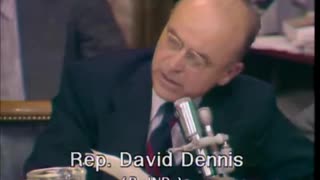 9:22:13
9:22:13
The Memory Hole
6 months agoNixon Impeachment Hearings Day 4 (1974-07-26)
991 -
 1:16:31
1:16:31
Omar Elattar
9 months agoThe Untold Story: How Vans Became a $3 Billion Dollar Shoe Empire In 75 mins
200 -
 LIVE
LIVE
Lofi Girl
2 years agoSynthwave Radio 🌌 - beats to chill/game to
222 watching -
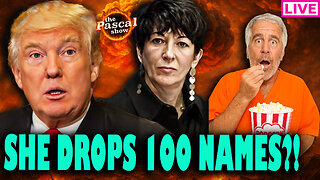 1:56:31
1:56:31
The Pascal Show
14 hours ago $0.17 earnedGHISLAINE FLIPS?! DOJ Receives SECRET LIST of 100 Epstein Associates!”
1821 -
 10:17
10:17
Dr Disrespect
11 days agoIt's Time To Get Serious
174K27 -
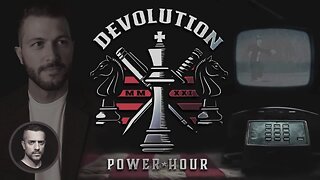 2:15:09
2:15:09
Badlands Media
21 hours agoDevolution Power Hour Ep. 375: Obama’s Orders, Ukraine’s Collapse & the Inversion of Justice
251K66 -
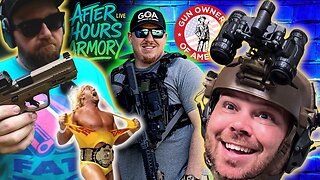 2:32:03
2:32:03
BlackDiamondGunsandGear
11 hours agoAFTER HOURS ARMORY w/ DLD & John from GOA & FLR
20.4K3 -
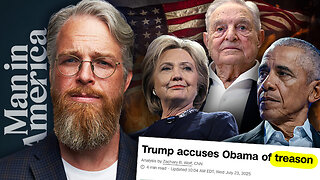 1:05:28
1:05:28
Man in America
12 hours agoTREASON? Obama, Hillary, and Soros in the New World Order Agenda EXPOSED w/ Mel K
76.1K57 -
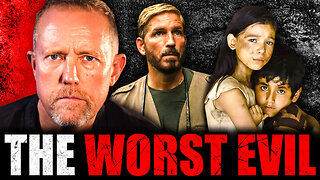 2:22:46
2:22:46
The Connect: With Johnny Mitchell
12 hours ago $3.54 earnedOne Man's Mission To Stop Human Trafficking: How A Billionaire Mercenary Saved Hundreds Of Children
17.7K11 -
 2:35:13
2:35:13
Tundra Tactical
8 hours ago $6.99 earned🔫 California Ammo Win, Sig Sauer P320 Controversy, Meme Review & Would You Rather! 🎉🔥
33.4K5